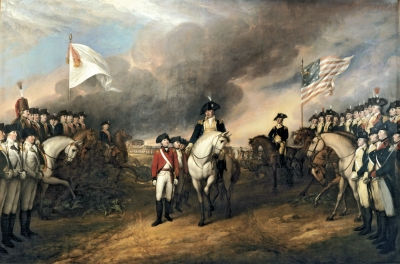
REVOLUTIONS
A revolution is a sweeping social change that takes place in a short period of time. This is often violent, as unpopular governments are overthrown, either by mass uprisings or small groups of organized revolutionaries. The aim of revolutionaries is to create a better society – to make people more equal, or more free. Yet it is often easier to destroy a bad government than it is to create a better one.
AMERICAN REVOLUTION
Between 1775-81, Britain’s 13 colonies in North America fought a war of independence, in which they successfully threw off the rule of King George III. In their 1776 Declaration of Independence, the American leaders declared that “all men are created equal” with the right to “life, liberty, and the pursuit of happiness”.
FRENCH REVOLUTION
In 1789, rioting against the government of King Louis XVI spread across France. Using the slogan of “liberty, equality, fraternity”, revolutionaries overthrew the king. In 1793, the French leaders launched a reign of terror, during which they executed all opponents, including the king, by guillotine.
RUSSIAN REVOLUTION
The Bolshevik Party, led by Vladimir Lenin, seized power in Russia in October 1917 and founded the first communist state. The communists set about creating a new kind of society, a “workers’ state” based on common ownership of industry and land.
CULTURAL REVOLUTION
In 1949, communists, led by Mao Zedong, took power in China. In 1966, Mao, who feared that China was sliding away from communist principles, launched a “cultural revolution” to root out old ways of thinking. Opponents and intellectuals were persecuted, and the country came close to chaos.
CUBAN REVOLUTION
In 1956-59, Cuban rebels, led by Fidel Castro and Che Guevara (left), overthrew the corrupt government of the dictator, Fulgencio Batista. Although Castro went on to rule as another dictator, he improved conditions for the Cuban poor, and provided them with greater access to hospitals and schools.
VELVET REVOLUTION
Mass protests in November 1989, and a general strike in Czechoslovakia, proved enough to bring down the unpopular communist government. The lack of violence led to this being called the “velvet”, or soft, revolution. Here marchers carry the flag of the new Czech Republic (Czechia).
Picture Credit : Google




